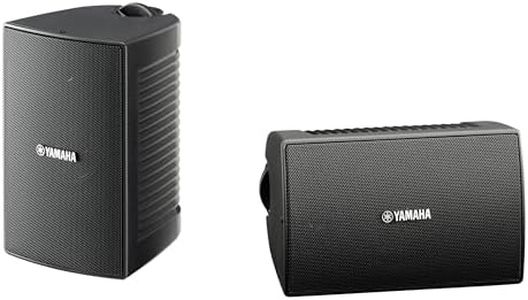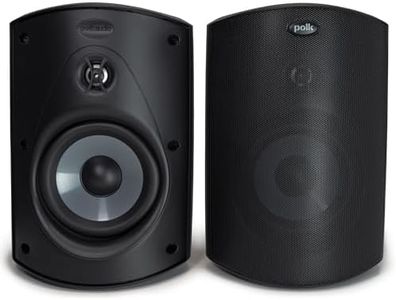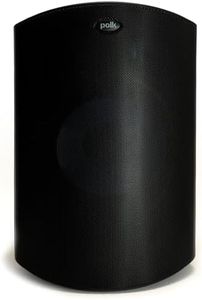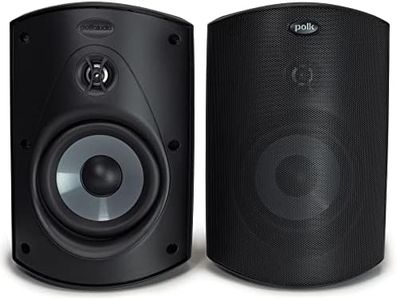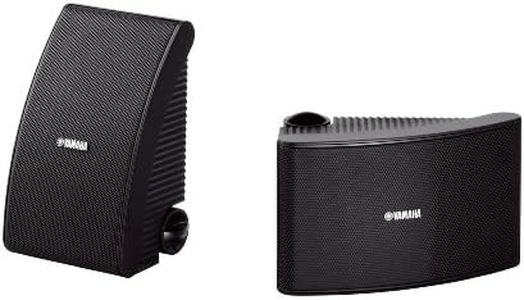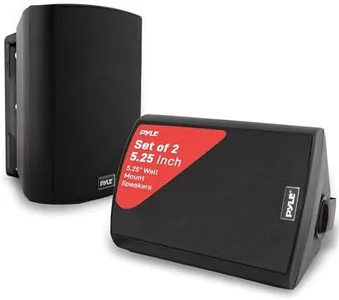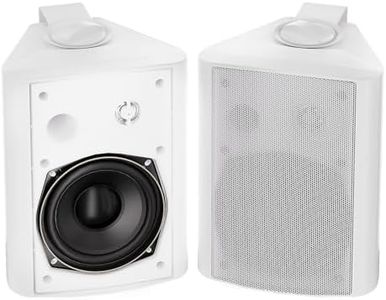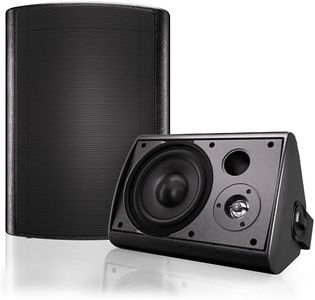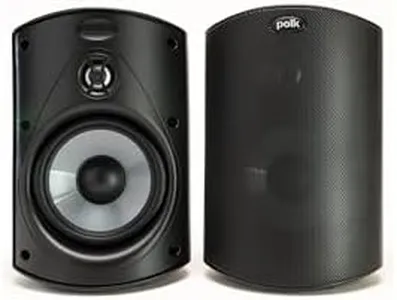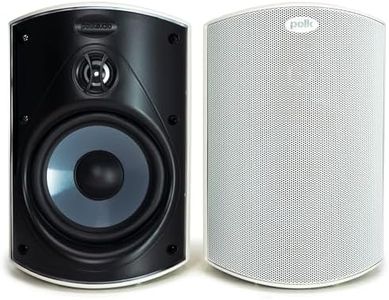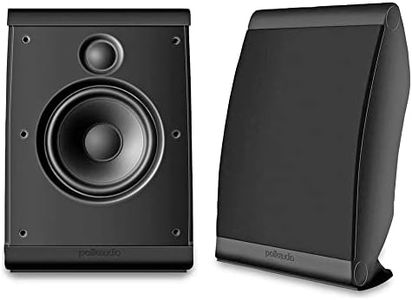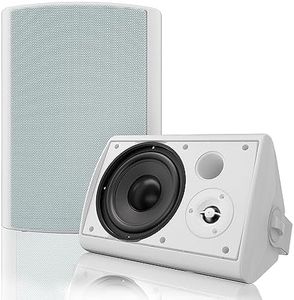We Use CookiesWe use cookies to enhance the security, performance,
functionality and for analytical and promotional activities. By continuing to browse this site you
are agreeing to our privacy policy
10 Best Outdoor Wall Mount Speakers
From leading brands and best sellers available on the web.Buying Guide for the Best Outdoor Wall Mount Speakers
Choosing the right outdoor wall mount speakers can make a big difference in enjoying music, podcasts, or even movies outside, whether you’re hosting parties or just relaxing. Since these speakers need to handle weather and deliver good sound quality across various spaces, knowing what to look for will help you make a smart choice. Think carefully about where you’ll install them, what you’ll use them for, and how they’ll integrate with your current audio setup before making a decision.Weather Resistance (IP Rating)Weather resistance describes how well a speaker can handle outdoor conditions like rain, dust, and sun. This is often shown through an IP (Ingress Protection) rating, such as IP54, IP65, etc. The first number tells you how protected it is from solids like dust, and the second refers to water resistance. Lower numbers mean basic protection against splashes or dust, while higher numbers offer protection from strong water jets or total dust protection. Think about your local climate—if you live somewhere with heavy rainfall or a lot of dust, go for a higher IP rating to make sure your speakers last.
Speaker Size (Driver Size)The size of the speaker, often measured by the diameter of its main driver (the part that moves the air), affects both sound quality and how much space it covers. Smaller drivers (around 3 to 4 inches) are more compact and easier to place but may not deliver strong bass. Mid-sized drivers (5 to 6 inches) balance sound quality and size, making them a great all-around choice. Larger drivers (8 inches or more) produce fuller, deeper sound and higher volume but require more space and sturdier mounting. Choose based on the size of your outdoor area and how much emphasis you want on bass and overall richness.
Power Handling (Wattage)Power handling describes how much power in watts a speaker can take from an amplifier without being damaged. A lower wattage (20-40W) is suitable for smaller patios or quiet environments, while medium wattage (50-80W) works for average-sized yards. Higher wattage (100W or more) is designed for large, open spaces or when you want music loud enough to fill a party. The right choice depends on the size of your outdoor area and how loud you want your sound—don’t pick the highest number just because it’s there; think about your normal listening needs.
ConnectivityOutdoor wall mount speakers might connect to your system with wires (wired) or wirelessly (via Bluetooth or Wi-Fi). Wired speakers usually offer more stable sound quality and don’t need to be recharged, while wireless options are easier to install and move around if needed. If you have a fixed location and want reliability, wired might be better. If flexibility or ease of setup is your priority, consider wireless—but make sure your Wi-Fi or Bluetooth connection reaches your outdoor area.
Mounting FlexibilityMounting flexibility means how easily you can adjust or position the speakers after they’re installed. Some speakers offer adjustable brackets that let you tilt, swivel, or angle the speakers for the best sound coverage. Fixed mounts stay in one direction. If your listening area changes (like moving patio furniture) or you want to focus sound away from your neighbors, adjustable mounts give you more control. If your setup is permanent and straightforward, fixed mounts can work well.
SensitivitySensitivity is a measure of how efficiently a speaker turns power into volume, usually shown as a number (like 87 dB or 92 dB). Higher sensitivity means the speaker plays louder with less power. For outdoor use, higher sensitivity can help maximize your sound, especially over larger spaces, or if your amplifier isn’t very powerful. If you have a powerful amplifier, sensitivity is less critical, but for smaller amplifiers or battery-powered systems, look for a higher number.

